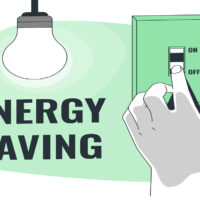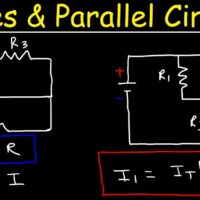Capacitance in parallel adds the individual capacitances together. The total capacitance is the sum of all capacitors’ values.
Capacitance is a fundamental concept in electronics and electrical engineering. In parallel circuits, capacitors share the same voltage across their terminals. This configuration allows for an increase in the overall capacitance. Engineers and hobbyists often use parallel capacitors to achieve desired capacitance values.
This technique is essential for tuning circuits and enhancing performance. Understanding how capacitors behave in parallel is crucial for designing efficient electronic systems. It simplifies calculations and aids in achieving specific electrical characteristics. This knowledge is valuable for both theoretical studies and practical applications in various fields.
Introduction To Capacitance
Understanding capacitance is crucial for anyone interested in electronics. Capacitance refers to the ability of a system to store electrical charge. It’s a fundamental concept in electrical engineering. This section will explain the basics of capacitance and its importance in circuits.
Basic Concepts
Capacitance is measured in farads (F). A capacitor is a device that stores electrical energy. It consists of two conductive plates separated by an insulating material called a dielectric.
When voltage is applied, an electric field forms between the plates. This field stores energy. The amount of stored energy depends on the voltage and the capacitance of the capacitor.
Here is a simple formula for capacitance:
C = Q / V
Where:
- C is the capacitance in farads
- Q is the charge in coulombs
- V is the voltage in volts
Importance In Circuits
Capacitors play a vital role in various circuits. They can store and release energy quickly. This makes them useful for stabilizing voltage and power flow.
In parallel circuits, capacitors add up their capacitance values. This increases the overall capacitance. Here is a table showing how capacitance adds in parallel circuits:
| Capacitor | Capacitance (F) |
|---|---|
| C1 | 2 |
| C2 | 3 |
| Total | 5 |
Capacitors also help filter signals. They block direct current (DC) but allow alternating current (AC) to pass. This makes them essential in signal processing.
In power supplies, capacitors smooth out fluctuations. They help maintain a steady voltage level. This is important for the stable operation of electronic devices.

Credit: wiki.testguy.net
Parallel Capacitor Configuration
Understanding capacitors in parallel helps in electronic circuit design. This configuration offers unique advantages. Let’s dive into how it works and its benefits.
How It Works
In a parallel capacitor configuration, all capacitors are connected side by side. Their positive terminals connect together, and their negative terminals do the same.
The formula for total capacitance is simple:
C_total = C1 + C2 + C3 + ... + Cn
Each capacitor’s value adds up. This increases the total capacitance of the circuit. The voltage across each capacitor remains the same.
Benefits Over Series
The parallel configuration has several advantages over series.
- Increased Capacitance: Total capacitance is the sum of all capacitors. This is higher than any single capacitor.
- Consistent Voltage: All capacitors have the same voltage. This makes the circuit more stable.
- Reliability: One capacitor failing doesn’t affect the others. The circuit can still function.
| Parameter | Parallel Configuration | Series Configuration |
|---|---|---|
| Total Capacitance | Sum of all capacitors | Less than the smallest capacitor |
| Voltage | Same across each capacitor | Divides among capacitors |
| Reliability | More reliable | Less reliable |
Using capacitors in parallel is practical. It enhances circuit performance and reliability.
Calculating Total Capacitance
Understanding capacitance in parallel circuits is crucial for electronics enthusiasts. Calculating the total capacitance helps in designing efficient circuits. Here, we break down the process into simple steps. This section will help you grasp the concept with ease.
Simple Formulas
To calculate the total capacitance in a parallel circuit, use a basic formula. The formula is straightforward. Sum up the capacitance values of all capacitors. Here is the formula:
Ctotal = C1 + C2 + C3 + ... + Cn
For example, if you have three capacitors with values:
- C1 = 10μF
- C2 = 20μF
- C3 = 30μF
The total capacitance will be:
Ctotal = 10μF + 20μF + 30μF = 60μF
Practical Examples
Let’s look at some practical examples. These examples will solidify your understanding.
Example 1: You have two capacitors. The values are:
- C1 = 5μF
- C2 = 15μF
Using the formula:
Ctotal = 5μF + 15μF = 20μF
Example 2: You have four capacitors. The values are:
- C1 = 2μF
- C2 = 4μF
- C3 = 6μF
- C4 = 8μF
Using the formula:
Ctotal = 2μF + 4μF + 6μF + 8μF = 20μF
These examples show how easy it is to calculate total capacitance. You can use this method for any number of capacitors. This knowledge is vital for creating efficient circuits.
Impact On Circuit Efficiency
Understanding the impact of capacitance in parallel on circuit efficiency is vital. This knowledge helps in designing more effective and stable electronic circuits. Let’s explore how parallel capacitors influence energy storage and voltage stability.
Energy Storage
Capacitors in parallel increase the total capacitance of a circuit. This means they can store more energy. Think of it like adding more batteries to a device. The device can run longer without needing a recharge.
Here’s a simple table to show how capacitance adds up in parallel:
| Capacitor 1 | Capacitor 2 | Total Capacitance |
|---|---|---|
| 10 µF | 20 µF | 30 µF |
| 5 µF | 15 µF | 20 µF |
Adding capacitors in parallel is like combining their storage capacities. The total capacitance is the sum of all individual capacitances.
Voltage Stability
Parallel capacitors also help in maintaining voltage stability. They ensure the voltage remains steady even with varying loads. This is crucial for delicate electronic components that need a constant voltage to operate correctly.
Here are some benefits of voltage stability:
- Protects sensitive electronic parts
- Prevents voltage spikes and drops
- Ensures smooth operation of devices
For example, in a circuit with parallel capacitors:
Capacitor 1: 10 µF
Capacitor 2: 20 µF
Total Capacitance: 30 µF
The combined capacitors act as a buffer, absorbing and releasing energy as needed. This maintains a steady voltage across the circuit.
Applications In Modern Electronics
Capacitance in parallel circuits plays a vital role in modern electronics. These circuits are used in various devices and equipment, enhancing performance and functionality.
Consumer Devices
Consumer devices use parallel capacitance to improve their efficiency. For example, in smartphones, capacitors stabilize power supply and manage energy distribution. This ensures a smooth user experience.
- Smartphones: Capacitors help in power management, ensuring battery longevity.
- Laptops: They stabilize voltage, preventing unexpected shutdowns.
- Smartwatches: Capacitors enhance signal processing and battery efficiency.
Televisions also benefit from parallel capacitance. Capacitors in TVs manage power and improve picture quality. This results in clearer images and better viewing experiences.
Industrial Equipment
Industrial equipment relies on parallel capacitance for efficient operation. In manufacturing plants, capacitors regulate power supply to machinery. This ensures consistent and reliable performance.
| Equipment | Benefit of Parallel Capacitance |
|---|---|
| Robotic Arms | Stable power, precise movements |
| Conveyor Belts | Continuous operation, reduced downtime |
| 3D Printers | Accurate output, efficient energy use |
Capacitance in parallel circuits also protects equipment from electrical surges. This is crucial in industrial settings where power fluctuations can cause damage.
Design Considerations
Designing circuits with capacitors in parallel requires careful planning. One must consider various factors to achieve optimal performance. Below, we explore the key design considerations.
Choosing Capacitors
Choosing the right capacitors is crucial. First, identify the desired capacitance value for your circuit. Capacitors come in different types, such as ceramic, electrolytic, and tantalum. Each type has unique characteristics.
- Ceramic Capacitors: Offer stability and low cost.
- Electrolytic Capacitors: Provide higher capacitance values.
- Tantalum Capacitors: Known for reliability and compact size.
Consider the voltage rating of each capacitor. Ensure the rating exceeds the circuit’s maximum voltage. Also, check the tolerance levels. This indicates the accuracy of the capacitance value. Lower tolerance means higher precision.
Balancing Values
Balancing capacitor values is essential for even charge distribution. Use capacitors with similar capacitance values to maintain balance. This ensures uniform performance.
Here is a table summarizing the key points:
| Capacitor Type | Key Features | Ideal Use |
|---|---|---|
| Ceramic | Stable, low cost | General use, high-frequency circuits |
| Electrolytic | High capacitance | Power supplies, filtering applications |
| Tantalum | Reliable, compact | Space-constrained applications, precision circuits |
For circuits requiring high capacitance, consider multiple capacitors in parallel. This approach distributes the load and increases total capacitance. Ensure all capacitors share the same voltage rating to avoid failure.
Proper selection and balancing of capacitors improve circuit performance. This results in efficient and reliable electronic designs.
Common Mistakes
Understanding capacitance in parallel is crucial for electronic projects. Many beginners make common mistakes that affect performance. These mistakes can lead to device failure or component damage. Below are two main mistakes people make.
Avoiding Overload
Overloading can happen easily in parallel capacitance. Here are some tips to avoid it:
- Check the maximum voltage rating of each capacitor.
- Ensure the total capacitance value does not exceed the circuit limit.
- Use capacitors with similar ratings for balanced load.
Overloading can cause excessive heat. This may damage your components.
| Capacitor | Max Voltage | Capacitance |
|---|---|---|
| Capacitor A | 25V | 10µF |
| Capacitor B | 50V | 20µF |
Ensuring Compatibility
Compatibility between capacitors is vital. Here are some tips to ensure compatibility:
- Match the voltage ratings of all capacitors.
- Choose capacitors with similar ESR values.
- Verify the tolerance levels are within acceptable range.
Incompatible capacitors can cause uneven charge distribution. This leads to poor circuit performance.
Always check the manufacturer’s specifications for each capacitor. This helps in selecting compatible components.

Credit: m.youtube.com
Future Trends
The world of electronics is evolving rapidly. Capacitance in parallel is no exception. This section explores the future trends. We will focus on new technologies and innovative uses.
Emerging Technologies
New technologies are emerging every day. Graphene capacitors are leading the charge. They offer higher efficiency and smaller sizes. They are perfect for portable devices. Nanotechnology is also changing the game. It allows for more precise capacitor designs. This means better performance and lower costs.
Another exciting development is supercapacitors. These capacitors store more energy than traditional ones. They are ideal for electric vehicles. Flexible capacitors are also making waves. They can bend and stretch. This makes them perfect for wearable tech.
Innovative Uses
Capacitance in parallel is finding new uses. Energy harvesting is one such area. Capacitors can store and release energy from the environment. This includes solar and kinetic energy. Medical devices are also benefiting. Capacitors help power implants and wearable health monitors. This improves patient care and quality of life.
In smart homes, capacitors are crucial. They help manage energy usage. This leads to lower bills and a greener planet. Internet of Things (IoT) devices also rely on capacitors. They ensure devices run smoothly and efficiently.
Below is a table showing the new uses and their benefits:
| New Use | Benefit |
|---|---|
| Energy Harvesting | Stores and releases environmental energy |
| Medical Devices | Power implants and health monitors |
| Smart Homes | Manage energy usage efficiently |
| IoT Devices | Ensure smooth and efficient operation |
The future of capacitance in parallel is bright. Emerging technologies and innovative uses are driving this change. Keep an eye on these trends. They are set to revolutionize the field.

Credit: www.electronics-tutorials.ws
Frequently Asked Questions
What Is Capacitance In Parallel?
Capacitance in parallel means connecting multiple capacitors side by side. The total capacitance is the sum of individual capacitances.
How To Calculate Total Capacitance In Parallel?
Add the capacitance values of each capacitor. The formula is C_total = C1 + C2 + C3 +. . .
Why Use Capacitors In Parallel?
Using capacitors in parallel increases total capacitance. This helps in storing more electrical energy.
What Are The Benefits Of Parallel Capacitors?
Parallel capacitors provide greater total capacitance and improved energy storage. They can also stabilize voltage.
Conclusion
Understanding capacitance in parallel is essential for optimizing electrical circuits. It simplifies calculations and enhances circuit performance. By mastering these concepts, you can design more efficient systems. Keep exploring and practicing to improve your skills. Stay curious and committed to learning about electronics for better results.
You can also read: Current Calculation in a Series Circuit








1 thought on “Capacitance in Parallel: Maximizing Circuit Efficiency”